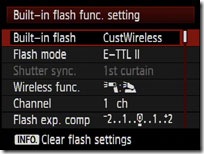

This shutter speed is what is called the sync speed - ie the maximum shutter speed where the flash can fire and evenly expose the whole frame.Īs for how to deal with sync issues, there are a few solutions:ĭarken your ambient exposure by other means: close down the aperture, reduce ISO or add an ND filter and you will reduce the shutter speed - reduce it to below the sync and you will be able to balance the flash and ambient. The problem comes once you get to the point that the second curtain is moving before the first finishes, there is no point during that exposure where the entire frame is uncovered that the flash can fire - if you could get the flash to fire, you would end up with part of the frame exposed as expected, but also part of it dark as the shutter was obscuring it as the flash fired. With slower shutter speeds it fires while the sensor is completely uncovered, and lights up the whole image in that time.


With very quick exposures though, because the shutters take a set amount of time to travel across the sensor, the second curtain starts moving before the first curtain has fully opened - so rather than having a pause in the middle between the movements of the first and second curtains, the exposure essentially becomes a letterbox, moving down across the image.įlash on the other hand is always a instantaneous burst of light in the order of thousandths of a second, whatever the exposure time. With long exposures the time it takes to move the curtains is somewhat irrelevant, since it is a tiny fraction of the exposure time. When you hit the shutter button the first curtain moves, exposing the sensor to light, and then after the required length of time the second curtain moves to cover over the sensor again. The shutter consists of two curtains, one initially covering the aperture, and one 'open'.


 0 kommentar(er)
0 kommentar(er)
